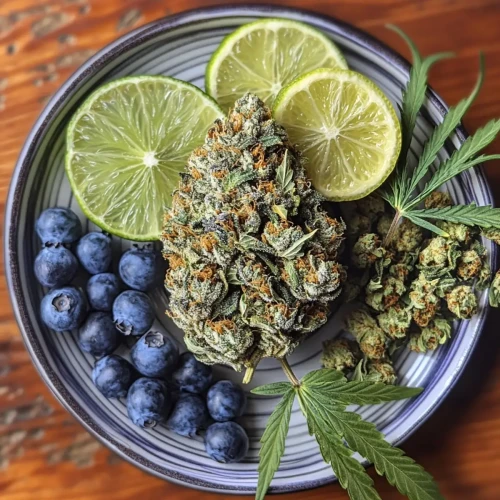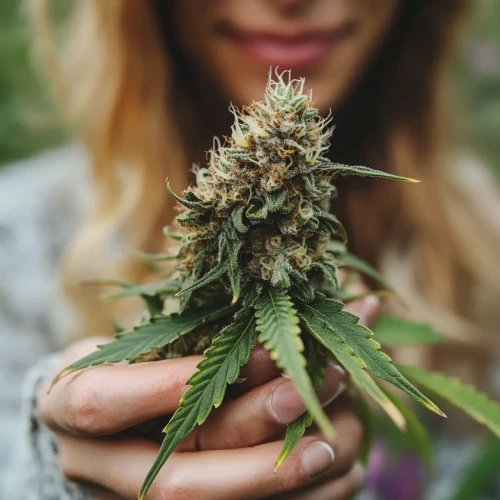The cannabis market is growing quickly, and both recreational and medical users now have a lot of choices, each with its own effects and flavors. However, the branding and naming conventions frequently employed in the marketing of cannabis strains exhibit inconsistency and a lack of clear scientific foundation. This has made it hard for users to know for sure what kind of experience they will have with a certain cultivar.
The Real Link Between the Effects, Flavors, and Chemical Makeup of Cannabis
A recent comprehensive study published in the Journal of Cannabis Research, conducted by researchers Alethia de la Fuente, Federico Zamberlan, and their team, aimed to elucidate these relationships. Their groundbreaking research examined subjective user reports and scientific chemical data from more than 800 commercial cannabis strains, seeking to identify definitive correlations between user-reported experiences and the chemical profiles of these cultivars.
Understanding How the Study Worked
The researchers used publicly available data from Leafly, a popular site for cannabis reviews, and added chemical analyses from PSI Labs, a certified cannabis testing lab. What is the goal? To objectively evaluate whether user perceptions of cannabis, based on flavors and effects, corresponded with the actual chemical compositions, including cannabinoid and terpene profiles.
Important Findings at a Glance
- Subjective Experiences Have Chemical Roots: The most interesting finding was the clear link between how people feel when they use cannabis, like relaxed or energized, and certain chemical compounds in the plant. Users' descriptions, which were grouped into effects like calming, stimulating, or unpleasant, were strongly linked to certain terpene profiles and cannabinoid ratios.
- Flavor Profiles as Reliable Indicators: The research showed a strong link between the amount of terpenes, which are the aromatic compounds that give cannabis its unique flavors, and flavors that people said they tasted, like citrus, earthy, berry, or pungent. Terpenes are very stable across generations and are controlled by genes, so flavor is a good way to guess how cannabis will affect you.
- Machine Learning and User Reports: Advanced machine learning algorithms could tell the difference between "Cannabis indica" and "Cannabis sativa" categories just by looking at the flavors and effects that people reported. For example, flavor profiles were 82.8% accurate on their own, while effect profiles were 99.6% accurate.
- Natural Language Processing (NLP) Checks User Reports: Researchers used NLP techniques on unstructured written user reviews and found that the sentiments and descriptions naturally matched the structured tags that users provided. This shows that the huge amount of user-generated content on the internet can help both consumers and researchers find what they need.


A Deep Look at Cannabinoids and Terpenes
The study emphasized the necessity of examining factors beyond THC (tetrahydrocannabinol) and CBD (cannabidiol). THC and CBD are important for predicting psychoactive and therapeutic effects, but this study also showed that terpenes, like limonene, pinene, and myrcene, have a big impact on how people feel when they use them. For instance, strains with a lot of limonene were linked to stimulating effects, while strains with a lot of myrcene were linked to relaxing and sedative effects.
Useful Information for People Who Use Cannabis and People Who Work in the Industry
These results indicate that consumers should not solely depend on strain names or conventional "indica" or "sativa" classifications. Instead, concentrating on particular terpene and cannabinoid profiles may assist users in locating products more consistently aligned with their desired effects.
The study shows that professionals in the industry, especially growers and marketers, need to use clear and accurate labels that are based on chemical composition instead of broad categories or marketing buzzwords. This strategy not only helps customers trust you more, but it also makes sure that the products you offer are in line with what customers have actually experienced.
Looking Ahead: A Request for Standardization
This in-depth study makes a strong case for more standardization and openness in the cannabis industry. As the market grows, both regulatory bodies and customers are likely to want clearer rules and information about products that can be verified. Chemical tests should be done on a regular basis so that consumers can learn more and set more realistic expectations.
Last Thoughts
The pioneering study conducted by de la Fuente and associates unequivocally illustrates that the flavors and subjective effects reported by cannabis users can consistently indicate the plant's chemical composition, especially terpene profiles. This link is a useful way to get more accurate information for consumers, improve product development, and make therapeutic uses more specific. For authors, cultivators, and anyone invested in the cannabis industry, recognizing and acting upon these insights will be critical in navigating and thriving within this rapidly evolving market.
Understanding cannabis is no longer just about THC percentages or simplistic indica/sativa distinctions, it’s about a deeper appreciation for the complex chemistry that shapes every unique cannabis experience.





